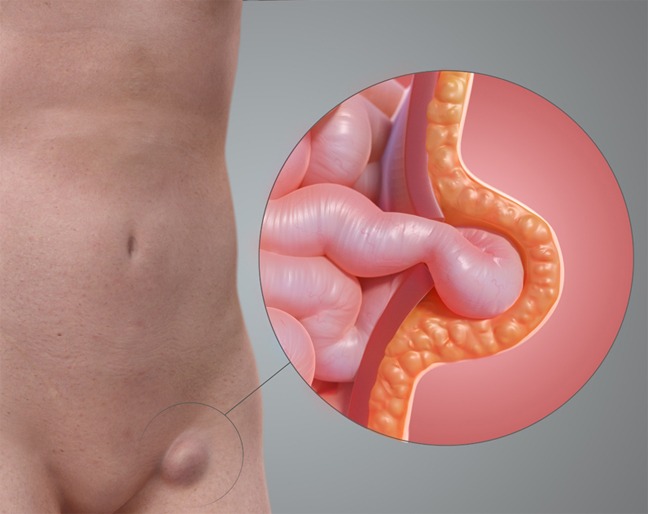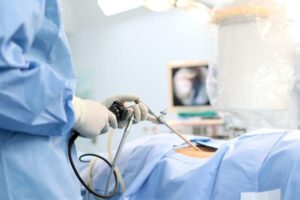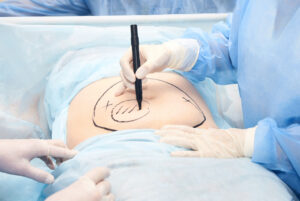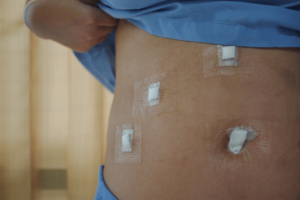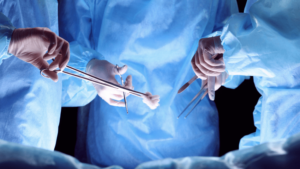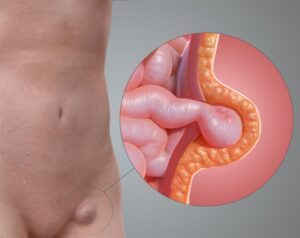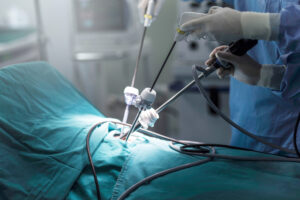What are the surgical options available?
Hernia repair involves first reducing the hernia and the subsequent reinforcement closure of the defect in the abdominal wall. While defects used to be closed with sutures in older techniques, the
current standard of repair now is recognised to be a tension-free repair with a mesh. The mesh used in hernia repair is normally made of synthetic material, which then promotes the ingrowth of organic bodily tissue, which in turn reinforces the closure of the defect.
The operation can be performed with either an open method or minimally invasive laparoscopic (key-hole) method. The open method involves a longer cut on the skin directly over the hernia and dissection through the layers underneath to access the hernia defect. This can also be accomplished
through regional or local anaesthesia. Laparoscopic hernia repair is performed through smaller key-hole incisions. With the aid of a
camera on a telescope, the operation is performed through special longer
instruments.
What are the complications of hernia repair?
Other than the potential risks associated with anaesthesia, the complications of hernia repair
include bleeding, infection and seroma formation, and recurrence and nerve injury in the long term.
During the operation, there is a small risk (<1%) of injury to the organs around the hernia during
the course of liberating the sac. These organs include the intestines, urinary bladder, nerves, blood vessels and the spermatic cords (which transport
sperm from the testicles).
Seroma is a common post-operative collection and swelling of fluid at the hernia site. This can be
mistaken for an early recurrence, as a lump is seen to recur. However, this is very often
self-limited and disappears after a duration that depends on the
initial size of the seroma.
Numbness is uncommon after hernia repair, and is often temporary. However, a persistent numbness
and rarely, a sharp pain, might complicate matters in 1-2% of
operations.
Recurrence of a hernia occurs in 2-3% of patients, and can occur anytime from the early post-operative period to many years after the wound has healed.
What are the advantages of laparoscopic hernia repair?
Laparoscopic hernia repair, while demanding a higher level of surgical expertise, is associated
with less post-operative pain, faster recovery, and smaller scars compared to the open operation. The rates of recurrence are similar to the open operation,
under expert hands.
Am I a candidate for laparoscopic hernia repair?
Laparoscopic hernia repair is not the best operation for certain patients, especially those with
previous abdominal operations, or those with significant medical
conditions.
In a small number of patients, the laparoscopic operation cannot be safely completed, and needs to
be converted to an open procedure. The decision to
convert is always strictly based on patient safety.
What should I expect after surgery?
Immediately after the operation, if general anaesthesia was administered, you will be transferred
to the recovery room until you are fully awake. As it is with all operations, there will be a mild discomfort at the operation site, but this should not be a severe pain. You might have a slight
hesitancy and difficulty passing urine after surgery. If this is significant, you might require a temporary tube into the urinary bladder for as long as one week.
After your discharge, you can be expected to return to work within a week if your job is sedentary.
However, a longer period of rest is required if your job requires significant physical activity.
In either case, you will be advised to lay off heavy
physical activity and heavy loads for at least 6 months after surgery.

